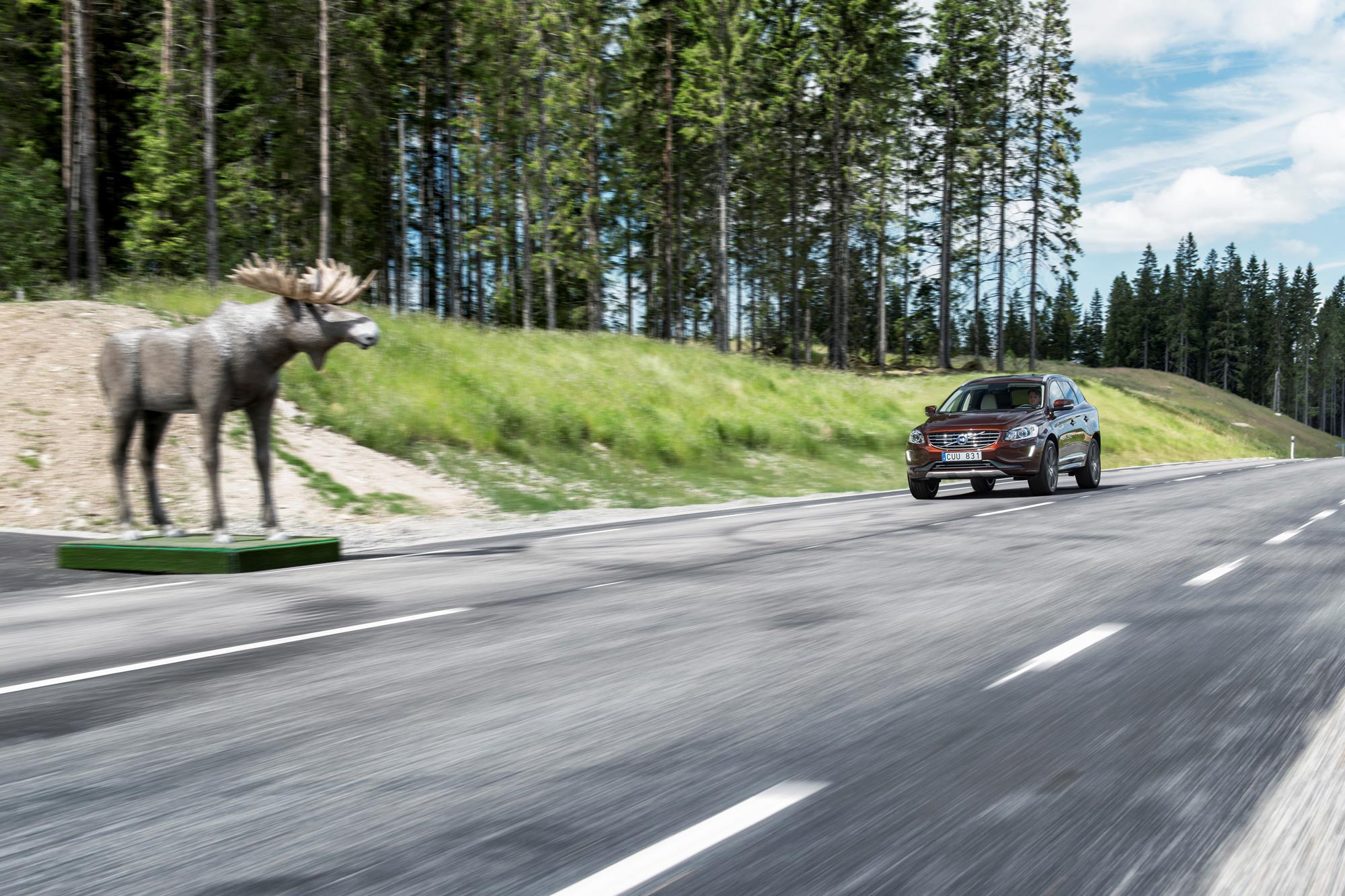What Is the Moose Test?
It's the moose on the road, not the one at the wheel, that makes this test so important.
 Volvo
Volvo
QuickTakes:
Automotive safety tests tend to have fairly self-explanatory names: frontal impact, side impact, roof crush, etc. Step outside of a traditional crash-test facility, however, and you'll run into one or two non-traditional trials some new cars and trucks face that test their stability and performance.
Of these, perhaps none has a more evocative title than the moose test. What, exactly, is the moose test, and where did it originate? Spoiler alert: It doesn't involve letting one of the massive mammals behind the wheel of your vehicle.
Animal Impact Is Serious Business
Wildlife intrusions onto roadways are a major safety concern in the United States. According to the Insurance Information Institute, nearly 2 million animal collisions occurred over a 12-month period starting in the summer of 2022 that were serious enough to warrant insurance claims.
Some animals are more dangerous to hit with a car than others. Moose are capable of growing up to 7 feet tall and weighing in at more than a thousand pounds. The risk of injury or death from hitting one is compounded by the fact that a moose's center of mass is at precisely the right height to hit the windshield when a vehicle's bumper strikes the animal's legs.
Although there are fewer moose crashes than deer collisions in the United States, research has shown moose strikes lead to significantly higher risk of death compared with deer collisions.
 Volvo
Volvo
The Scandinavian Solution
While deer are responsible for the most deaths in the U.S. when compared with other animals, primarily because of vehicle collisions, in Scandinavian countries the presence of deer is compounded by a significant moose population. As a result, car companies based in countries such as Sweden have historically designed their vehicles to better protect against moose impact.
Of course, the best protection is to avoid a collision altogether, and it's here that the moose test and Scandinavian automotive design intersect. In addition to the standard set of crash safety tests, companies such as Volvo as well as private automotive testing publications have incorporated the "moose avoidance maneuver."
This replicates the abrupt steering-wheel motion required to swing a car or SUV out of the way of a stationary moose. Because a vehicle is typically traveling at high speed when this avoidance occurs (roughly 62 mph), stability is of prime importance to avoid a rollover.
The term "moose test" became popularized in the late 1990s after a Swedish publication called Teknikens Värld broadcast footage of a small, but high-riding Mercedes-Benz hatchback losing control as a result of the test. Teknikens Värld has been publishing these kinds of test results since the early 1980s.
How to Pass the Moose Test
The moose test makes for dramatic viewing in
Another factor that can play a role in how well an automobile responds to this type of violent steering at high speed is its stability control program. In fact, Toyota was able to fix a moose test problem with its recent RAV4 SUV by recoding its stability control system.



